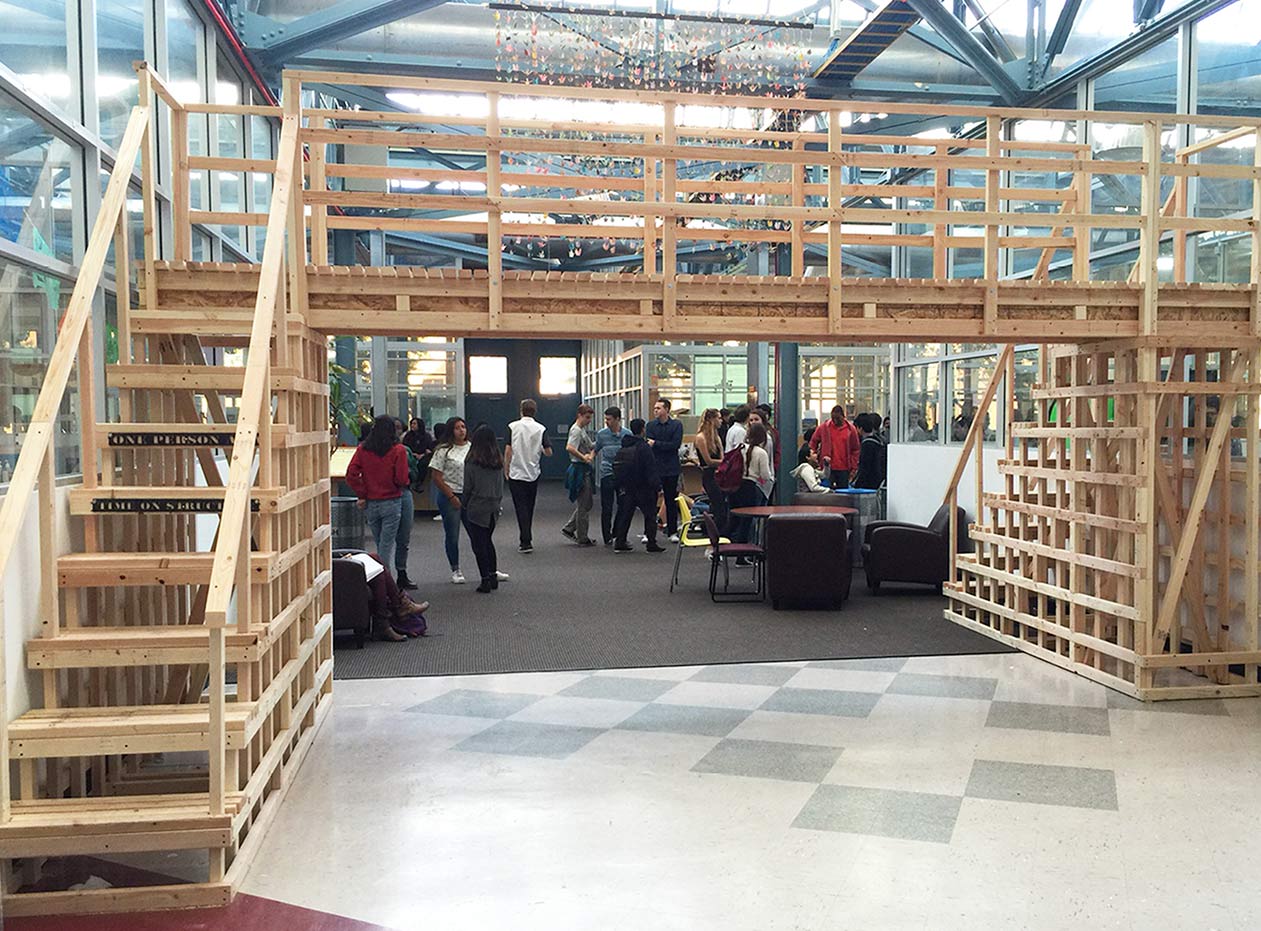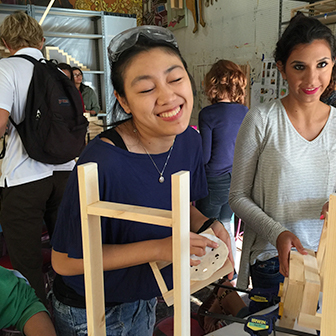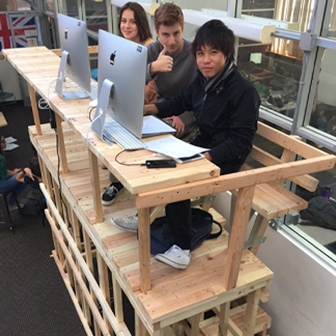PROJECT DESCRIPTION
INSTRUCTORS
SCHOOL SITE
LEVEL
SUBJECTS
ELECTRICITY USAGE
LESS THAN FIVE MATERIALS
TEACHERS NEEDED
BOOK CHAPTER

“If a staircase goes somewhere, it is craft; if it goes nowhere, it’s art.” — one of the many examples Jeff Robin used to explain the difference between art and craft.
Jeff Robin and Andrew Gloag planned to do a collaborative project. Jeff had an interest in staircases from a failed staircase he tried to build at home. Andrew knew that there was lots of physics, trigonometry, and geometry within staircase construction and design. The math was broad enough that all students, no matter their level, could use the math they knew and math that they would learn to design and document their constructions.
Jeff created the model staircase exemplars and understood the scope and difficulties of creating scale models. Jeff and Andrew worked together on the scope of the project, understanding students would learn by making scale staircases and doing the math. This knowledge led them to create open-ended learning goals that would allow for student voice and choice.
Over the summer, Andrew and Jeff planned the project, where they quickly found out that they should start small. The teachers made a 1:10 scale model as proof of concept and the first exemplar. They then created a math poster to explain the staircase they built.
Want to see the whole project? Click the button to download the pages from the book that discuss this project!
Want to see the whole project? Click the button to download the pages from the book that discuss this project!
The first day of class the students arrived and were handed a yardstick. In pairs, they went out and measured real staircases. They weren’t tipped off as to what the project would entail. All they were told was “go out with your partner and document a staircase.”
The first assignment was to create a 1:10 scale staircase of any design they wished. Students created a poster explaining the math they had used in their staircase. The idea of this first assignment was to have fun and for students to realize that their intuitive and prior math knowledge could help them design and build. It also served to create curiosity for the math they would learn next.
For the second assignment, teams of two designed and created a 1:5 model staircase highlighting newly learned math concepts. Most teams worked with their teachers to find a math concept that they could utilize. From parabolas to quadratic equations to fractals, each team dove deeply into a concept that they could apply to a staircase. Working in teams was essential: both students had to learn SketchUp or CAD to design the 1:5 model staircase.
In the final project, teams of 10 used math and physics to collaboratively design and build a Staircase to Nowhere to add to the school community. This culminating project asked the students to design, finance, and organize an artistic and highly mathematical building project that would bring people together. The assignment was open-ended enough to allow students to make what they wanted as long as they designed, built, and worked together for the community.

Three students wanted to do something different. They realized that they could use the math, design, and woodworking they learned during the semester to create a geodesic hang dome in the common area of High Tech High. The open-ended learning goals allowed for the creation of different products with the same learning outcomes.
Exemplars were used instead of rubrics. When working individually, each student explained their work to the class and teachers. When working in teams, the team presented their work to the class and the teachers, explaining what they learned and what they might have done differently. The multiple assignments built on each other. Students were evaluated on the quality of their revision, and their explanation of what they learned about art, design, math, physics, and teamwork.

